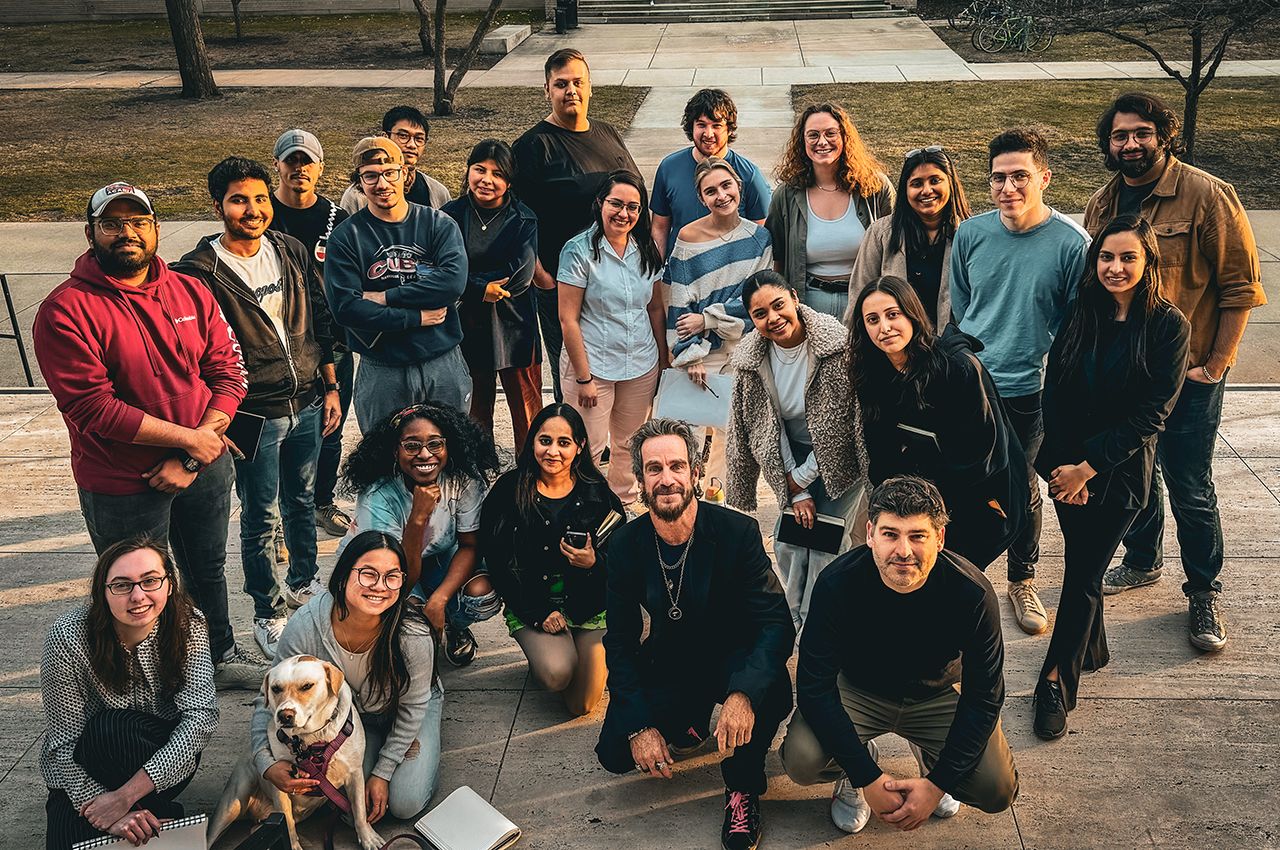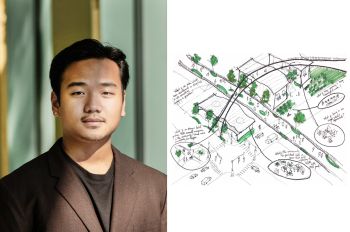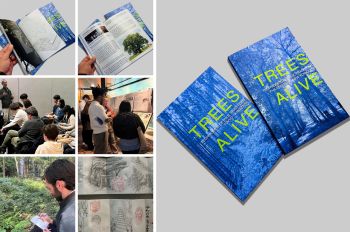Building Beyond Sustainability

Many architects talk of incorporating sustainability in their projects. But what if there’s little left to sustain?
That’s a question posed to 22 students by Illinois Institute of Technology College of Architecture’s 2024 Morgenstern Visiting Chairs, Iker Gil and Michel Rojkind, who have been teaching an advanced spring 2024 advanced architectural studio titled Beyond Sustainability: A New Era of Reciprocity.
When asked the same question that they ask their students, the two accomplished architects talk of the need for community “regeneration,” or building back community functions that once existed in now-vacant, abandoned spaces. “We can’t deal with just sustainability. There’s not a lot to sustain anymore,” says Rojkind. “We need to evolve from a ‘leave no trace’ philosophy to one of ‘leave it better,’ ensuring our designs act as homages to inclusivity, engagement, and vibrancy.”
Rojkind points to a past major project of his in Mexico City, the National Film Institute, which besides complying to the original program of renovation, adding more theaters and more vault archive spaces, transformed a mundane parking lot into a partially covered performance and gathering space. Fading blacktop was replaced with creatively landscaped sitting areas that face multi-functional venues and outdoor movie screens. “What program can you establish that will build into the community? What happens outside its doors?” Rojkind asked not just of himself, but of his students this year. “If it’s not engaging in the community, it’s lacking in opportunity.”
The primary objective of the Beyond Sustainability studio, according to its syllabus, is “to create a space that exemplifies reciprocal relationships between architecture, its users, and the broader community.”
Gil prepared for the course by scouring Chicago for a collection of adjacent vacant spaces that could be built upon using “the principles of reciprocity” within a strong community. The proposed builds would have to mutually benefit the buildings’ users, the area’s residents, and the City of Chicago as a whole.
Gil and Rojkind settled on an area between Humboldt Park and East Garfield Park—in particular, a large space around and including several blocks of West Franklin Boulevard, just north of the Garfield Park Conservatory. The boulevard itself was the focal point—more of a barrier than a community space, with three bordering roads blocking extended interior greenspaces from any neighborhood use. Gil and Rojkind wanted students to change that.
“In some areas of Chicago, the boulevards become these big dividers in neighborhoods. This was an opportunity: How do we use vacant lands to create projects in proximity to benefit each other, reshape our relationship with the boulevards, and give back to the community?” Gil says.
Students split into eight teams, each choosing a separate vacant lot on the boulevard, to create new uses that will not just assimilate with, but augment the neighborhood. Some students interviewed members of the Humboldt Park community; one student had attended a high school in the chosen section of the boulevard, and knew it well.
The draft projects, in keeping with the project’s parameters, appear to build upon each other. There’s a mental health center beside an art collaborative that houses (potentially therapeutic) open painting and dancing studios. A community kitchen that combines food experimentation, production, and consumption, celebrating and elevating the culinary experience of the local community. A childcare and eldercare facility connected with a clean manufacturing space. A physical therapy building built next to an existing running track. “Students looked into what the gaps were,” Gil says. “They are trying to look at the synergies of all the sites, thinking more holistically when it comes to health and the community.” Adds Rojkind, “It’s not just about the building, it’s about the people that inhabit them, the lives they touch. If we stretch [the students’] minds to start thinking that way, they stop thinking about the object.”
The teams also collaboratively redesigned the boulevard itself by removing the oversized road down the middle to make one large green space bordered by two one-way roads. A proposed bike lane cuts through the green space, and each block has different draws: a playground, a sports field, a skatepark. The projects are non-repetitive, and always pedestrian friendly. The curb would be removed to place the roads and their surrounding sidewalks on the same level, protected from traffic by boundary markers, benches, and trees—improving accessibility.
As the students finalize their projects, Gil already is evaluating the studio’s legacy. “To me, studios are what you produce, but also what you explore and discuss during the semester. It is an opportunity to shape the way we think, the way we want to work, and the way we can contribute to shape the future of a place,” he says. Adds Rojkind, “Your openness with your colleagues is its own form of reciprocity.…The students’ enthusiasm for discussions on social, community, and empathetic dimensions of architecture, coupled with their diverse perspectives, has been particularly enlightening. It’s refreshing to see.”
Gil, who grew up in northern Spain, founded his Chicago-based studio, MAS Studio, in 2006, and has worked on numerous projects in Chicago, New Orleans, and Spain. He is also the founder and editor-in-chief of the nonprofit architectural publication MAS Context, and the executive director of the SOM Foundation, which supports interdisciplinary research for students and faculty of architecture, landscape architecture, interior architecture, urban design, and engineering.
Rojkind founded his studio, Rojkind Arquitectos, in Mexico City in 2002. He has been internationally recognized by media outlets including the New York Times, Forbes, Architectural Digest, and Architectural Record for his creative projects in Mexico, including the Chocolate Museum, National Film Institute, Mercado Roma, and Foro Boca, the home of the Boca del Río Philharmonic Orchestra.
Established by a gift from the Victor A. Morgenstern Family Foundation, the Morgenstern Visiting Chair in Architecture is an architectural practitioner of the highest caliber who has a substantial body of work that is widely and recently recognized in the field.




